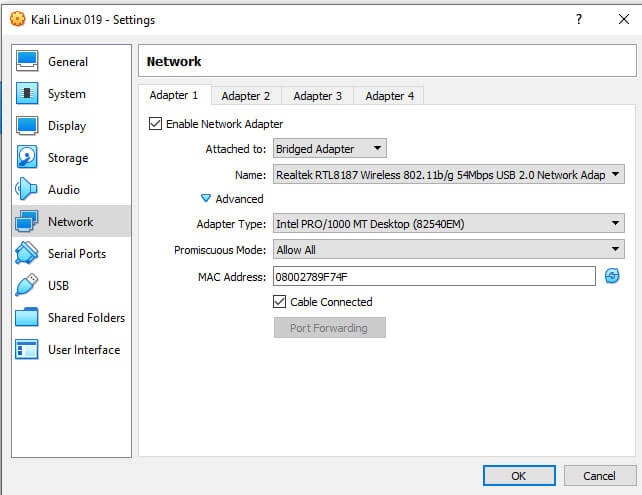

- #Install usb wifi adapter on mac for virtual bax how to
- #Install usb wifi adapter on mac for virtual bax install
- #Install usb wifi adapter on mac for virtual bax update
- #Install usb wifi adapter on mac for virtual bax password
Click the "Connect" button to activate the wireless network connection.Select "WPA 1" or "WPA 2" for the protocol version, as used by the network.Enter the passphrase/pre-shared key at "Password".Select the encryption method used (usually "WPA Personal").Tick "Use Encryption" if in use on the network.

#Install usb wifi adapter on mac for virtual bax password
#Install usb wifi adapter on mac for virtual bax how to
If you aren't sure how to use it though, or if you installed the desktop manually and might not have brought it in, the following will likely be useful.Įnsure your user account is a member of the netdev group. The KDE Plasma task should bring in plasma-nm during system installation without any extra steps being required, and its usage should be intuitive. See the NetworkManager page for frequently asked questions, documentation and support references. The network-manager-gnome package still exists and provides a systray applet for other desktops, but will not make any difference with GNOME 3. Open the "Networks" section of your settings, select your network in the list, enter the password as prompted, and you should be ready to surf the web. Your wireless interface should not be referenced within Debian's /etc/network/interfaces file.Īs of GNOME 3, integration with NetworkManager is baked into GNOME Shell, and will appear in the settings and as an icon in the top-right of your screen as long as it's running. NetworkManager itself is a frontend for different network backends (wpa_supplicant by default) that abstracts away the configuration and simplifies it.
#Install usb wifi adapter on mac for virtual bax install
Setting up DNS resolution for IWD (Simple)įor the average desktop user, the easiest way to configure your network is to install the GUI frontend for NetworkManager that corresponds to your desktop.Troubleshooting & Tips for NetworkManager.Type lsusb and iwconfig in order to confirm it. It's important to do so, but I imagine you have already done it.įinally, boot your Kali and once you're logged on, plug your WL-WN722N card. If you haven't created a filter for you WL-WN722N, do it now. To do so, go to the configuration window and into the USB tab. If you are using Oracle VirtualBox, for example, you will first need to install "oracle vm virtualbox extension pack" so you are able to use USB 2.0 and 3.0.Īfter that, you must configure your VM. So, to solve this, you must configure your Virtual Machine tu use USB 2.0. That's why, if you type down the command lsusb, you get to see the wireless card, but you don't get to see it if you use iwconfig. What happens is that your VM is most likely to be using USB 1.0, and the TL-WN722N uses USB 2.0. You see, the problem resides on the Virtual Machine (it aaaalways does). Link/ether 08:00:27:15:1c:30 brd just solved the same problem and I'll try to share how I did it the best I can. Tl-wn722n is suppose to be plug and play?īus 002 Device 001: ID 1d6b:3002 Linux Foundation 2.0 root hubīus 001 Device 003: ID 0b05:17cb ASUSTek Computer, Inc.īus 001 Device 002: ID 80ee:3021 VirtualBox USB Tabletīus 001 Device 001: ID 1d6b:3001 Linux Foundation 1.0 root link list ip link listġ:lo mtu 65536 qdisc noqueue state UNKNOWN mode DEFAULT
#Install usb wifi adapter on mac for virtual bax update
RX bytes:960 (960.0 B) TX bytes:960 (960.0 have already entered to make sure I have the updates apt-get update TX packets:16 errors:0 dropped:0 overruns:0 carrier:0 RX packets:16 errors:0 dropped:0 overruns:0 frame:0 TX packets:124 errors:0 dropped:0 overruns:0 carrier:0 RX packets:101 errors:0 dropped:0 overruns:0 frame:0 UP BROADCAST RUNNING MULTICAST MTU:1500 Metric:1 Eth0 no wireless also enter in ifconfig and receive: ifconfigĮth0 Link encap:Ethernet HWaddr 08:00:27:15:1c:30


 0 kommentar(er)
0 kommentar(er)
